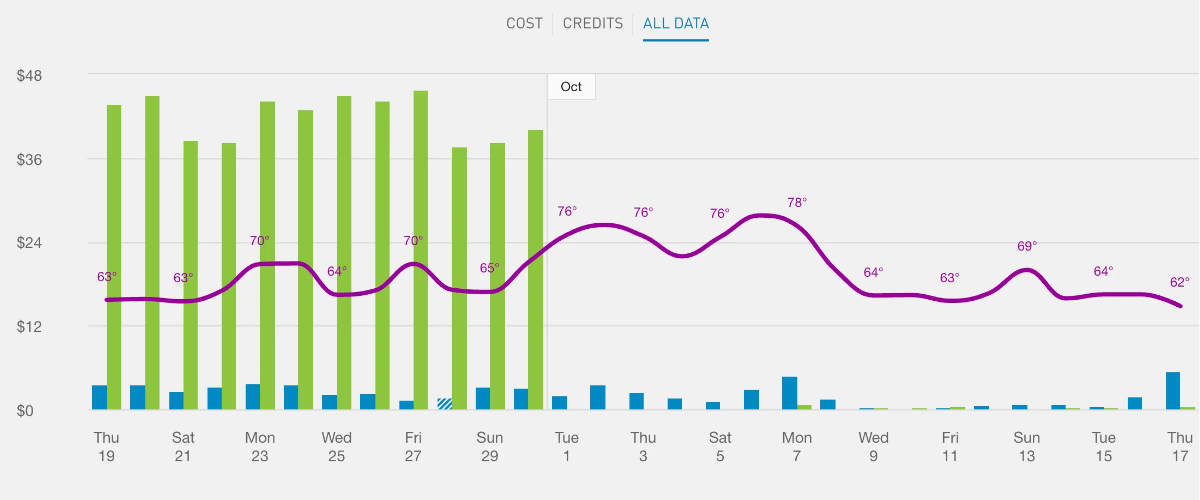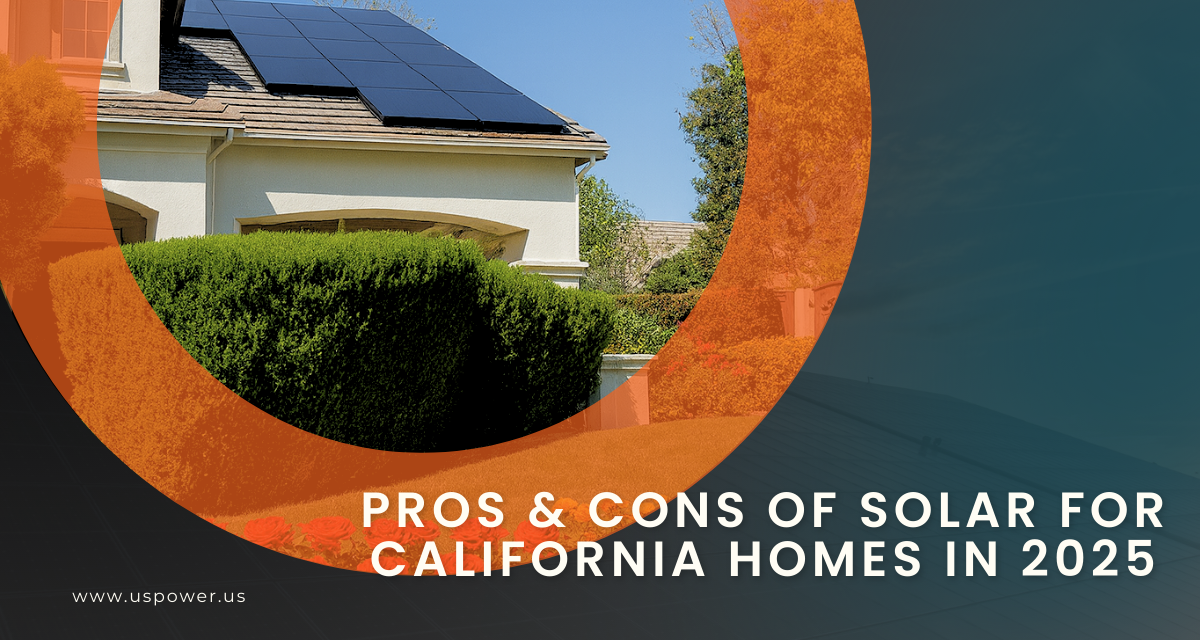Why Southern California Solar Homes Still Pay a Grid Fee

Solar and Roofing Advisor
Discover the fixed monthly charges for SCE, SDG&E, LADWP, and PG&E solar customers, and strategies to reduce bills and maximize solar efficiency in 2025.

Thinking about going solar in Southern California? Even if your system produces all the energy your home needs, you might still see a monthly grid connection fee. Understanding these fees, how net metering works, and how to optimize your solar system can save you hundreds per year. Read on to learn how US Power can help you maximize your solar investment with high-efficiency Qcells panels and battery storage.
Understanding Net Metering in California
Net metering allows your solar system to export excess electricity to the grid and receive credits on your utility bill for that energy. Southern California is one of the best regions for solar because of high sunshine hours and favorable net metering policies under NEM 3.0.
With net energy metering (NEM), your monthly bill is calculated as:
Electricity Used from Grid – Solar Export Credits + Fixed Monthly Fees = Total Bill
Even if your solar panels produce more energy than your home consumes, you cannot eliminate all charges because utilities charge a minimum monthly fee to maintain grid access.
Why You Still Pay a Base Monthly Fee
The base or fixed service charge covers:
- Infrastructure costs: poles, transformers, and wires.
- Metering and billing administration: reading, maintenance, and account management.
- Grid reliability: ensuring power is available when solar isn’t producing.
Even net-zero households pay these unavoidable fees. They can feel frustrating, but they are crucial to keeping the grid functional and ready for backup when your solar system or battery isn’t sufficient.
Minimum Monthly Charges for Major Southern California Utilities
Here’s a current breakdown for 2025:
| Utility | Fixed / Base Service Charge | Notes |
|---|---|---|
| Los Angeles Department of Water & Power (LADWP) | $10/month (R‑1A) or $12/month (R‑1B TOU) | Adjustment factors apply. Solar credits cannot reduce this fee. |
| Southern California Edison (SCE) | ~$24/month | Effective Nov 2025 under new Base Services Charge; cannot be offset by solar credits. |
| San Diego Gas & Electric (SDG&E) | $24.15/month (non-CARE); $12/month (FERA); $6/month (CARE) | Fixed for all residential solar customers; non-bypassable. |
| Pacific Gas & Electric (PG&E) | $24.15/month (non-CARE); $12/month (FERA); $6/month (CARE) | Applies to net-metered solar customers; fixed minimum applies even with zero net usage. |
| Imperial Irrigation District (IID) | $9.60/month | Rising gradually to $12.25/month by 2027. |
| Pasadena Water & Power (PWP) | $8.96 + $4.50 grid access = $13.46 | Applies to residential solar customers. |
| Burbank Water & Power (BWP) | $14.25 – $16.19/month | Varies by meter size; includes basic service and customer fee. |
| Anaheim Public Utilities (APU) | $8/month | Applies to Domestic TOU (Schedule D) plan. |
Key takeaway: Even if your solar system fully offsets your electricity usage, you cannot avoid these minimum charges. They are generally lower than the national average, but they should be factored into any savings calculation.
How to Reduce Your Net Charges
- Maximize daytime solar usage: Run appliances like washers, dryers, and EV chargers when the sun is producing energy.
- Install solar battery storage: Qcells battery storage lets you store excess solar for nighttime use, reducing imports from the grid and potentially lowering time-of-use fees.
- Choose the right TOU plan: Some LADWP and SCE plans charge more for energy used during peak hours; optimizing your schedule can save you money.
- Consider EV integration: Charging your electric vehicle from solar during the day can maximize your self-consumption.
- Use a trusted solar installer: US Power’s exclusive partnership with Qcells ensures factory-direct pricing, high-efficiency panels, and American-made reliability.
Real Example
Suppose you live in SCE territory:
- Your 10 kW solar system produces enough energy to cover your household usage completely.
- Net usage: 0 kWh → $0 energy charge.
- Base Services Charge: $24 → your bill cannot drop below $24.
- Adding a battery could let you store energy and reduce future peak-hour costs.
Without including these fixed charges in your financial planning, solar ROI calculations may be overly optimistic.
Why Southern California is Still the Best Place for Solar
- High sunshine hours year-round → max production.
- State incentives: Federal Solar Investment Tax Credit (ITC) still at 30% in 2025.
- Local incentives: Some municipal utilities and programs offer rebates and performance-based incentives.
- Exclusive Qcells panels via US Power → high-efficiency, American-made, factory-direct pricing.
Even with a minimum monthly fee, homeowners in Southern California save thousands per year on electricity and contribute to a cleaner, greener future.
Swith to Solar Now
If you’re a homeowner in Southern California, there’s never been a better time to invest in solar energy. With rising utility rates and the 30% Federal Solar Investment Tax Credit (ITC) still available for 2025, acting now ensures you lock in maximum savings while reducing your carbon footprint.
Here’s how you can take full advantage:
- Secure the 30% Federal Tax Credit Before It Decreases
The ITC allows you to claim 30% of your solar system cost as a tax credit on your federal taxes. This incentive is scheduled to step down in future years, so installing your system now can save thousands of dollars on upfront costs. - Pair Your Solar Panels with Qcells Battery Storage
Maximize the energy you generate by storing excess power for use at night or during peak-rate hours. Qcells battery storage allows you to reduce reliance on the grid, lower your energy bills, and prepare for potential outages—a smart move in Southern California’s sunny yet unpredictable climate. - Get a Customized Solar and Storage Plan for Your Home
Every home is unique. US Power creates a personalized solar plan that calculates projected payback, ROI, and savings. - Work with a Trusted Southern California Solar Provider
US Power offers professional consultation, seamless installation, and flexible financing across Southern California. Our exclusive partnership with Qcells guarantees factory-direct pricing and access to high-efficiency, American-made solar panels that deliver long-term reliability and performance. - Enjoy Peace of Mind and Long-Term Savings
With US Power, you’re not just installing solar—you’re investing in energy freedom, environmental responsibility, and financial savings for years to come. From Sherman Oaks to San Diego, homeowners are seeing the benefits of pairing solar with battery storage.
Schedule your free solar consultation today and see how much you can save!
Find out exactly how much you can save, how long your system will take to pay for itself, and start your journey toward energy independence with US Power.
Frequently Asked Questions
Artículos relacionados
Nuestros blogs relacionados
Why Every California Home Needs Energy Management
Learn how energy management helps homeowners save money and stay efficient.
Why Owning A Solar Beats Leasing, Long-Term
Discover why owning home solar panels saves more money than leasing over time.
Pros & Cons of Solar for California Homes in 2025
Thinking of solar? See what costs and benefits really look like in California.








Empoderamos a las comunidades y las empresas para que aprovechen las energías limpias y renovables energía solar soluciones que impulsan el crecimiento sostenible.
Derechos de autor © 2025 US POWER | Energía solar y techosUS Power - Axia by QCells. All Rights Reserved.
La privacidad es importante para nosotros, por lo que tiene la opción de deshabilitar ciertos tipos de almacenamiento que pueden no ser necesarios para el funcionamiento básico del sitio web. El bloqueo de categorías puede afectar a su experiencia en el sitio web.
Imprescindible
Estos elementos son necesarios para habilitar la funcionalidad básica del sitio web.
Personalización
Estos elementos permiten que el sitio web recuerde las elecciones que ha realizado (como el nombre de usuario, el idioma o la región en la que se encuentra) y proporcionan funciones mejoradas y más personales.
Mercadeo
Estos artículos se utilizan para ofrecer publicidad que sea más relevante para usted y sus intereses.
Analítica
Estos elementos ayudan al operador del sitio web a comprender cómo funciona su sitio web, cómo interactúan los visitantes con el sitio y si puede haber problemas técnicos.
Nosotros y nuestros socios externos utilizamos cookies y otras tecnologías para mejorar y rastrear su experiencia en este sitio, realizar análisis y personalizar el marketing para usted. Al usar el sitio, aceptas que usemos estas tecnologías, incluido el registro y el monitoreo de tus interacciones con el sitio.
¡Obtenga una estimación solar instantánea usando el satélite!










